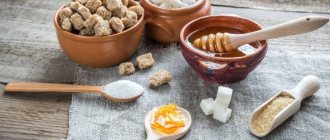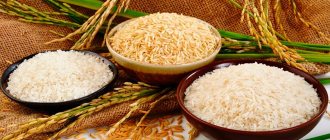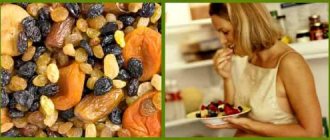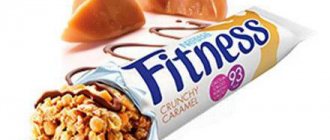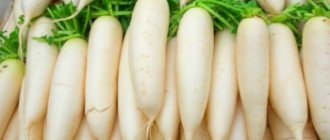A little bit of history
Rice is a plant from the cereal family, which is used both in the form of grain and as starch and cereal. And oil is successfully made from the germs. Well, who hasn’t heard of sake, which is also made from rice. The Japanese and all Asians, in principle, use this plant for a variety of purposes: from sweets to paper.
Rice came to us from Indochina and India. There is still a chance in these countries to find wild parent varieties that grow without human help. The widespread spread of the crop occurred after irrigation systems appeared. Then they began to grow it near rivers.
Features of the use of rice and rice water
Most people are aware of the ability of rice to regulate digestion and benefit diarrhea. It is also considered to be a dietary product. While the digestive tract support properties are proven, the dietary aspect requires clarification. Rice contains quite a lot of energy. Therefore, its use in uncontrolled quantities is impractical. But, let's see which rice is the most beneficial for the human body for certain health problems.
In folk medicine
Rice, the benefits and harms of which were discussed above, is used both in the form of porridge and in the form of a decoction. It's easy to prepare. Boil 2 tbsp. cereals in 1 liter of water until fully cooked. Then drain the liquid and cool. The resulting decoction can be seasoned with cinnamon, lemon zest or a few drops of lemon juice.
For diabetes
Brown rice has the lowest glycemic index and breaks down more slowly, causing minor changes in blood sugar levels. A 2006 study published in the International Journal of Food Sciences and Nutrition found that consuming it absorbed 23.7% less sugar than supplementing the diet with the regular white variety. The brown variety has this effect in part due to higher levels of phytic acid, polyphenols, dietary fiber, and rice oil. This makes it most suitable for diabetics and people with hyperglycemia.
For pancreatitis
Rice may be helpful in reducing inflammation of the pancreas. A recent study (2017) showed that its consumption plays a significant role in the prevention of chronic diseases, incl. pancreatitis.
For gastritis and ulcers
All varieties of cereal contain insoluble fiber, which is beneficial for the digestive tract. Fiber helps maintain regular bowel movements and facilitate digestion of food. Consumption of rice reduces constipation and counteracts hemorrhoids. The brown variety also contains high amounts of manganese, which aids in the digestion of fats. Additionally, rice is gluten-free, making it a popular part of gluten-free diets.
Important! When eating fiber-rich foods, be sure to drink plenty of water.
In case of poisoning
To cleanse the body in case of poisoning, drink exclusively rice broth, add liquids in the form of herbal teas. After your condition improves, you can supplement your diet with pudding.
- Decoction. Boil 50 g of cereal in 1 liter of water for 30 minutes, add boiled water to the original volume.
- Pudding. Boil 100 g of rice and 2 peeled, sliced (or grated) apples in 1 liter of water for 20 minutes, then add boiled water to the original volume. Can be sweetened with sugar.
For diarrhea
Rice water is ideal for stopping diarrhea, especially in children. You can add a few drops of lemon juice to it and drink it as a delicious drink. Drinking it replenishes not only liquid, but also mineral salts (especially potassium), complex carbohydrates (starch), which stop diarrhea.
Boiled rice mixed with apples and yogurt is a food that can be consumed after the diarrhea has subsided. This dish facilitates digestion, has an astringent effect, which is why it helps restore the intestinal mucosa after colitis or gastroenteritis.
For gastritis and stomach pain
Drink rice water as needed. This will calm the stomach, eliminate abdominal pain and heartburn.
For pancreatitis
Diet for diseases of the pancreas, incl. for pancreatitis, is based not only on the choice of foods, but also on their preparation. For example, you cannot fry in oil.
In case of exacerbation of pancreatitis (on days 2-3), rice porridge cooked in water, without butter or vegetable oil, is recommended. Boil 40 g of cereal in 400 ml of water. Add a little salt, cumin, which improves digestion.
When vomiting
A proven way to soothe the intestines when vomiting is rice water. According to modern recommendations, it is referred to as ancient and outdated, but its properties cannot be ignored.
Boil 1 tbsp. cereals (25 g) in 1 liter of water for 1 hour. Then drain the grain, squeeze into liquid, add more boiled water to the final volume of ½ liter of broth. Cool and store in the refrigerator for no more than 24 hours. The decoction is a mucous, whitish liquid. Prepare fresh decoction daily.
In home cosmetology
Rice water contains many valuable minerals that improve the quality of skin and hair. So why pour it out? Cool it to room temperature and test the abilities for yourself.
Rice for facial skin
Are you tired of spending your hard-earned money on anti-aging products that don't give you the desired results? Try to deceive the calendar in another and natural way - with rice water. It is known to contain beneficial nutrients that slow down biological aging. Regular and long-term use will give amazing results. Wrinkles become invisible, pores are reduced, skin elasticity improves. Healing water also restores damaged cells and skin pH.
Rice water for hair
Rice Treasure also works wonders on the head. Its component is inositol, a vitamin belonging to group B. This substance prevents damage to the hair, providing it with constant protection from harmful influences. Rice water strengthens hair follicles, gives shine to hair, and increases volume. Use it as a final rinse after regular shampooing.
Beneficial features
The “back and forth” of rice may be interesting, but I think what’s more important to you is why it’s useful. Anyone who is interested in sports nutrition knows that grains are valued for their protein content. To be precise, about 7-8% of the composition is protein. More precisely, these are as many as 8 amino acids, which allow you to recover faster after serious training.
But that's not all. Why is rice so actively used in sports nutrition? Firstly, it is gluten-free, to which many people are allergic. Secondly, it is rich in vitamins B, PP, E. Thanks to this, dishes made from this cereal help improve the condition of nails, skin and hair. And then not only your muscles will be toned!
You can also get many useful microelements from rice: calcium, iodine, phosphorus, zinc, selenium, iron. And thanks to complex carbohydrates, you can choose it to quickly fill up without the risk of gaining extra pounds. The nutritional value of boiled rice is about 110 kilocalories, depending on the variety.
Separately, I would like to note that grain allows you to improve your health. So the oligosaccharide will help the intestines, and lecithin will improve brain activity. Thanks to potassium, you neutralize the effects of salt on the body that you get from other dishes.
And in general, rice does an excellent job of removing toxins, especially if you choose brown, unrefined varieties. And due to the fact that it contains about 50% starch, you can be sure that after every meal you will feel full of energy!
In a dry matter, each grain of rice is:
- about 73-81% carbohydrates;
- 6-8% proteins;
- 0.6-2.6% fat;
- 0.2-1% fiber.
If you are interested, the grain consists of flower scales, seed coats (edible and containing many useful substances), and an embryo, which most often ends up on our table.
How to use
You can make porridge, puddings, and casseroles from rice. It makes a delicious pilaf or a base for stuffing sweet peppers. The crumbly varieties can be used in salads.
Rice dishes are loved by many athletes. But you need to follow some recommendations to get the maximum benefit from this product:
- To gain muscle mass, you need to use it every day;
- It is better to eat it in the first half of the day, since in the evening, rice dishes can contribute to weight gain;
- Rice is especially healthy when combined with vegetables or seafood;
- Before training, it is better to eat brown varieties; after it, you can eat white rice;
- It removes toxins and salts well, heals joints;
- You can buy this product in bags - this makes it easier to prepare.
It doesn’t matter what type of rice you eat, they are all good for athletes. It is especially important to eat it when doing bodybuilding, as it is a source of energy and building material for muscles. This grain product helps build muscle mass, maintains normal blood glucose levels and provides the athlete's body with many essential microelements.
Previous
Proper nutritionSeparate nutrition for weight loss: principles of combining foods and menu planning
Next
Proper nutrition Proper nutrition before and after training
Which type of rice is better
When you go to any more or less large store, you will see at least several varieties of cereals. But which is best for an athlete's diet? To begin with, it’s worth sorting out the hardware. And so, according to their shape, the following types of rice are distinguished:
- long-grain – highly elongated in shape, close to 8 mm in size;
- medium-grain – shorter, the grain has a length of about 5 mm;
- round-grain - as the name implies, almost round in appearance, length - only about 3 mm.
- There are also differences in color, or more precisely, in the type of processing:
- brown, which is often called brown - the grain is cleared only of scales;
- golden or steamed - the scales and peel are first removed, soaked in water, steamed, dried - this allows you to preserve about 80% of the nutrients;
- white - purified to the germ, while losing most of the useful stuff;
- black - in fact, this is not rice, the cereal Tsitsaniya water, which is comparable in benefits to white;
- red is one of the richest in protein, vitamins and minerals, as it is minimally processed and has a nutty aroma.
So what is the best way for an athlete to prepare himself to increase his resistance to metabolic syndrome and get the essential amino acids? Of course, unpolished brown or red, and a little lower about the desired shape. If it is grain in the nearest stores, then you can get by with steamed one. But only for today. And promise that you will go to the supermarket tomorrow!
Harm of rice to health
Rice, the health benefits and harms of which are determined by the chemical composition of the cereal crop, in some cases should be consumed with caution. The properties of the substances that make up rice can have both positive and negative effects on health.
For diabetes
In diabetes, the body's ability to produce the hormone insulin, which helps cells absorb sugar, decreases. In diabetes, sugar accumulates in the blood, and only insulin helps reduce its level. The main source of energy for humans is carbohydrates, which are contained in large quantities in white refined rice.
White rice contains a large amount of starch, which is converted into glucose. It is better for diabetics to exclude white polished rice from their diet. People suffering from diabetes are recommended to consume black, brown or brown rice. Unpolished cereal contains fewer carbohydrates and many useful substances that the body needs.
Heavy metals in the composition
Rice grains can accumulate heavy metals that are harmful to the body, which plants receive from soil and irrigation water. Compounds such as arsenic and lead are harmful to health even in the smallest doses, as they contribute to the development of cancer. Rice is a moisture-loving crop.
Heavy metals in the composition
If it is cultivated next to wastewater, then the release of lead and arsenic into the pulp of the grains, and from there onto store shelves, is inevitable. To protect yourself and your loved ones and purchase a truly useful product, you need to pay attention to the country of manufacture, which is indicated on the packaging. The natural waters of South Asia contain a large number of harmful substances.
Antinutrients
Phytic acid is found in cereals and blocks the body's absorption of phosphorus, calcium, and zinc. Ruminants and rodents, for whom cereals are the main food ingredient, have evolved to produce phytase, which neutralizes phytic acid and releases phosphorus molecules.
The human body is not able to produce phytase, so people cannot eat cereals alone, since phytic acid combines with minerals and inhibits the production of enzymes necessary for the breakdown of food and sugar. When consuming legumes and cereals in large quantities, mineral deficiency occurs.
The presence of phytic acid in rice grains is not a reason to completely abandon the use of cereals. To avoid undesirable consequences, you need to control the amount of grain products consumed and the quality of processing.
- Soaking the grains for 5-7 hours before cooking will help neutralize most of the phytic acid.
- Phytic acid molecules are destroyed in an acidic environment.
- When heated above 80°, antinutrients lose their ability to block mineral absorption.
Porridge is a favorite dish of many people. Knowing about the content of antinutrients in rice grains, you need to properly consume cereal dishes. In the presence of lactic acid bacteria, the body itself is able to produce phytase in small quantities and release molecules of iron, phosphorus, and calcium for absorption.
How to cook and store
If you have figured out which rice is better in color, then it’s time to decide on the intricacies of its consumption. But first, a few words about storage, otherwise there is a risk of getting additional proteins for dinner in the form of some kind of bugs. If such culinary experiments are alien to you, follow these tips:
- use sealed containers - whether it is glass or plastic does not matter;
- Do not place it in a place where it is humid or where the sun shines constantly;
- for additional protection against pests, proven “grandmother’s” methods are suitable - you should put a couple of cloves of garlic or dry lemon zest, chestnuts in a container with rice;
- observe the shelf life: for unpolished cereals - up to 18 months, and polished cereals do not spoil for years - look at the packaging for more details.
And now about cooking! In fact, it all depends on your imagination. You can eat rice as a regular side dish or as an ingredient in another dish. But there are several secrets. Firstly, when cooking, a simple proportion is usually used - one part of cereals to two parts of water.
If you miss the moment, then pour the liquid until its level is about two fingers higher than the cereal. Time to readiness is about 20 minutes, after placing in boiling water. Another important point: the longer the grain, the less water is needed. And don’t forget to rinse the rice under running water first. Ideally, until the latter is transparent.
And so - you succeeded. In this case, cooked long grain grains are best for side dishes and salads, as it is crumbly and firm. Medium grain is softer and slightly sticky, so it is ideal for risotto and soups. But short-grain rice literally sticks together, which allows it to be used for porridges, rolls and sushi, casseroles and various desserts.
Composition and calorie content of rice
Bodybuilders love rice because it is a good source of carbohydrates and calories. 100 g of raw cereal contains about 117 kcal and 27 g of carbohydrates. In this regard, boiled rice is slightly different - the calorie content per 100 grams is about 150 kcal. It contains about 2 g of protein and 0.1 g of fat. The cereal is characterized by a very low cholesterol and sodium content.
Of the minerals in terms of the recommended daily intake, the chemical composition is dominated by manganese and iron, but rice also contains quite a lot of selenium. Phosphorus, zinc, copper and calcium are also present in the grain in sufficient quantities. Rice contains a number of vitamins, most of them are group B and vitamin E.
Important! Rice contains glucan, which has a positive effect on the immune system.
Small conclusions
If you came to my blog to know whether an athlete needs rice, then the answer is unequivocal - yes. And there are many reasons:
- nutritional value and low calorie content;
- contains amino acids necessary for building muscles;
- protects against metabolic syndrome;
- strengthens the nervous system;
- will be useful for drying and when working out the relief;
- promotes weight loss as it has a low glycemic index.
And finally, another video recipe for cooking rice from a pro.
So feel free to include rice in your diet in any form to feel better. The main thing is to avoid “empty” white and black cereals. And then the results of grueling training will soon become noticeable. Good luck!
How do simple and complex carbohydrates affect the body at the biological level?
The body's need for carbohydrate consumption is determined by the amount of energy expenditure. For example, the average requirement for people who do not lead an active lifestyle is up to half a kilogram per day. Eating too many carbohydrates can cause you to gain weight. In this case, an important role is played by the correct ratio of easily digestible and slowly digestible carbohydrates. The former include sugars, the latter – starch and glycogen. If a lot of sugars enter the body, they are not processed into glycogen. Excess sugars are converted into triglycerides, which stimulate the growth of adipose tissue.
Starch and glycogen slowly break down in the body, gradually activating sugar production. That is why nutritionists recommend giving preference to slow carbohydrates. Slow carbohydrates should make up 90% of the total carbohydrate intake. However, processed foods, such as white flour-based foods, sugar, and sweet cereals, have relatively minimal nutritional value.
Eating these foods can provide you with a lot of calories. Much more than the human body can process. As you know, the abundance of such food is transformed into fat. In addition, fast carbohydrates are strictly contraindicated for people who adhere to a carbohydrate diet. Slow carbohydrates take longer to digest than simple ones; they are a source of energy. Complex carbohydrates make you feel full. Therefore, they are classified as dietary foods.
For example, if you eat a muffin with coffee for breakfast, after an hour you will feel hungry again. If you replace this meal with cereal with milk or porridge, you will not want to eat until lunch and will feel more energetic.
What foods should be included in the menu for muscle growth?
Nutrition should consist not only of foods that are well digestible by the body, but also healthy foods that contain the necessary nutrients. Cereals such as semolina, buckwheat, rice, as well as oatmeal and potatoes are rich in carbohydrates. Mackerel, herring, tuna, and salmon contain a lot of fat.
There is a clear gradation of products based on the high content of a particular nutrient:
Carbohydrate-rich foods
- bread (black);
- flakes;
- noodles;
- muesli;
- porridge (oatmeal, rice, buckwheat, wheat, millet, corn);
- pasta;
- hazelnut;
- walnuts;
- mushrooms;
- peanut;
- potato;
- apricot seeds.
Products containing protein
- peas;
- eggs;
- walnuts;
- beans;
- boiled fish;
- fat cottage cheese;
- yogurt;
- poultry meat;
- Fried fish;
- kefir;
- milk;
- caviar;
- semolina;
- mutton;
- sausages;
- boiled sausage;
- beans;
- beef meat.
High fat foods
- sardines;
- anchovies;
- salmon;
- red meat;
- ghee;
- butter;
- sour cream;
- chips;
- cream;
- salo;
- walnuts;
- crackers;
- cake;
- chocolate;
- mayonnaise;
- sausage;
- bakery products;
Based on this information, creating a diet is not difficult. The main thing is to maintain the ratio of nutrients.
Is it possible to completely give up simple carbohydrates and who needs it?
Athletes, as well as those on a strict diet, are advised to completely abandon fast carbohydrates. However, a ban on carbohydrate foods is a temporary measure, which in no case should become a permanent rule. Sweets give strength for physical activity and energy for the mind. During the diet, nutritionists recommend replacing simple carbohydrates with complex ones. When the diet is over, it is advised to treat the intake of fast carbohydrates thoughtfully and rationally, reducing their consumption to a reasonable limit.
There is a time for a certain variety
Bodybuilder training is divided into stages. At one of them he gains weight, and at another time he tries to increase muscle definition. Each period has its own rules in nutrition. When gaining weight, you need a high-calorie and balanced diet.
A good source of energy are complex carbohydrates , which are found in large quantities in rice. During this period, a bodybuilder can use any type of rice in his diet. The higher its calorie content, the better.
After this, the athlete dries out the muscle relief. During this period, using brown or black rice will be most effective. This ensures good performance is maintained. The athlete will be in a good mood and feel quite energetic in the gym. In addition, the body will be effectively cleansed of ballast particles. Metabolic products will leave it.
It is no secret that high physical activity contributes to the formation of large amounts of free radicals. And you need to get rid of them.
These compounds can cause significant harm to the entire body. In addition, it has been proven that they can lead to the formation of malignant neoplasms. All this will help prevent the consumption of rice, which plays a very important role in the life of a bodybuilder.
Rice in bodybuilding
When visiting grocery stores, your eyes widen at the number of varieties of rice on the counter. Of course, such a wide choice cannot but rejoice, but athletes need to choose only a truly healthy product. It is clear that not all varieties of rice may be beneficial. But first, a little theory.
Rice is a herbaceous plant and belongs to the grass family. This culture ranks third in popularity in the world. Rice is native to Southeast Asia, where this product is extremely popular. The following types of rice are distinguished:
By grain shape:
- Round grain;
- Long grain;
- Medium grain;
By processing method:
- Golden;
- Black;
- Wild;
- Brown;
- Red;
- White.
The most nutritious of all are wild, brown and red rice. You should also talk about polished and unpolished rice. The domestic market mainly offers polished ones.
Rice in bodybuilding
Rice is one of the main sources of carbohydrates in a bodybuilder’s diet. Unfortunately, many beginners, when trying to gain muscle mass, make one serious mistake - they make rice the main and only (!) source of carbohydrates. Natural bodybuilding limits not only the rate of muscle growth, but also the capabilities of the gastrointestinal tract. Only an athlete who uses anabolic steroids or special supplements that significantly improve digestion can eat half a kilogram of “dry” rice per day. The extreme case is the “monsters” of genetics, which 95% of those reading these words are not.
Carbohydrates. What are they?
Since you and I are interested in fast carbohydrates, it would be logical to assume that there are also slow ones. And they differ in the speed of absorption, which is why they got their names. If slow ones should be taken before training so that they provide energy throughout the entire training, then fast ones will be useful only after its completion (for about half an hour).
The point is that it is necessary to restore the resources spent in class as quickly as possible. One of these resources is glycogen, which can only be restored thanks to fast carbohydrates, but not slow ones - they will take a long time to be absorbed, they will already “close”, and the muscles will not receive their glycogen on time.
Yes, at any other time, slow carbohydrates are preferable to fast ones, because fast ones contribute to the accumulation and deposition of fats under the skin. But not in this case. In addition, a small portion (about 100 grams) of fast carbohydrates not only restores wasted muscle energy, but also awakens, as it were, hunger in the body: this amount is not enough, no more carbohydrates came from the food (only proteins), so the body will have to take it into circulation. » your personal reserves - those very deposits of subcutaneous fat. So it turns out that in this case, fast carbohydrates play into our hands. But only in this case!
Water and its quantity
Gaining good muscle mass is impossible for those who do not pay attention to water - the presence of a sufficient amount of moisture in the body. A deficiency is fraught with a lack of progress in the task assigned to the athlete. The optimal daily intake for those who build muscle is considered to be from two to four liters. The exact amount is determined by the weight of the athlete.
You should not drink while eating. This creates an obstacle to the natural process of digestion and absorption of nutrients, preventing the digestive system from working at one hundred percent. Water is best consumed between meals.
Before training starts
It is better not to eat before class, but at least two hours before it. Preference should be given to products that contain complex carbohydrates. They provide a great boost of energy to ensure a productive and efficient workout.
You can eat a portion of pasta, porridge, as well as vegetables and fruits. A protein-carbohydrate mixture will not cause any harm. You can drink it about half an hour before training.
After completing training
You should not neglect eating after exercise.
This time is most favorable for the absorption of all nutrients necessary for building muscle mass, and in the greatest quantities.
Immediately after exercise, it is permissible to either consume a serving of gainer or eat two bananas. A full meal should be after 40 minutes and consist mainly of proteins and slow carbohydrates.
Cooking rules
Absolutely any product can be ruined if it is not prepared correctly. The casing protects the rice from overcooking, but you should not overcook it over the fire.
To preserve the nutritional properties, pre-soaking is required. It is better to soak it overnight. If such actions are carried out, then you can cook it for no more than 30 minutes . If we are talking about the black variety, then this will take at least an hour. Once the rice is fully cooked, immediately drain it into a colander.
Often athletes, when they cook rice, do not salt it at all. They replace it with dried garlic, anise seeds and other spices.



